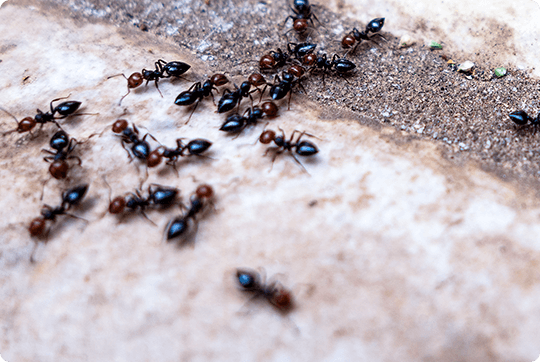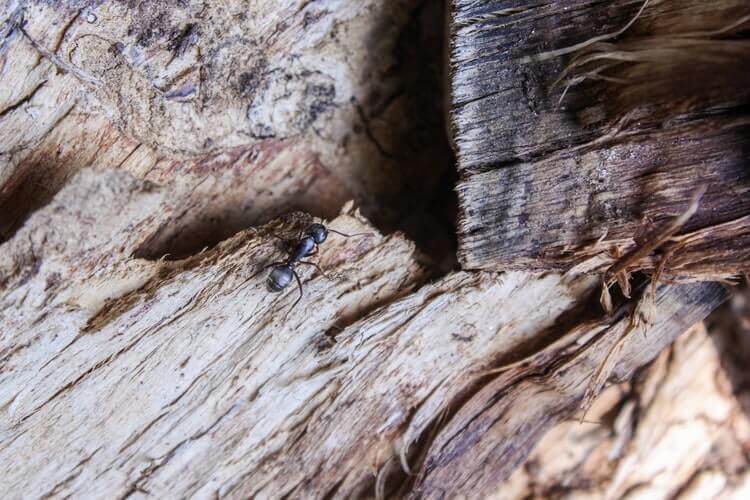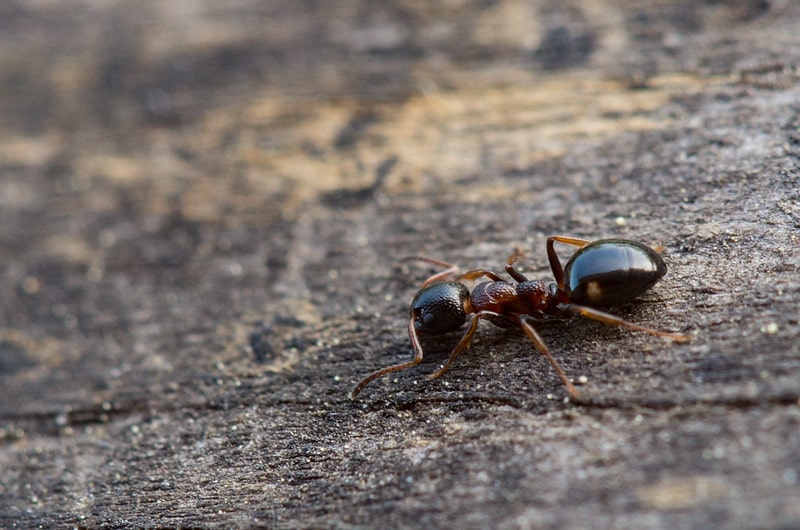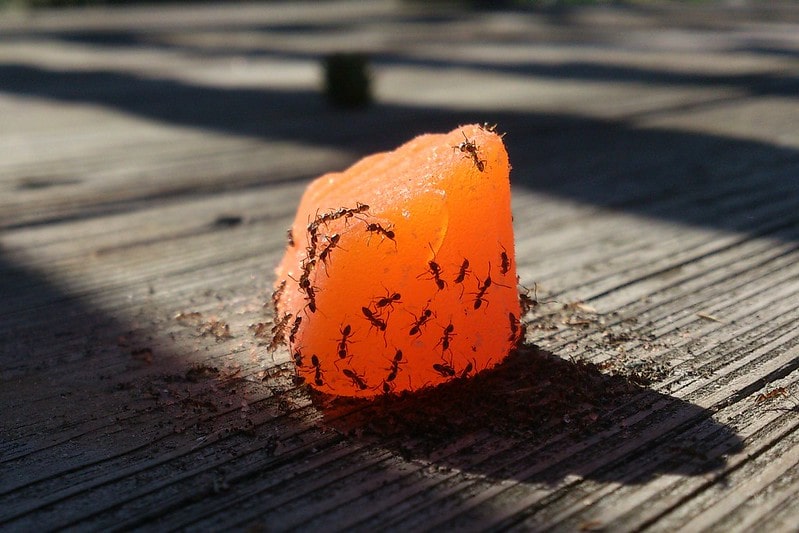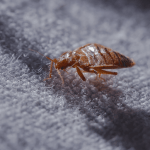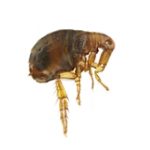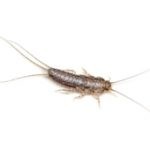Do Ants Bite or Sting?

Image by: Gob_cu/ Shutterstock
Ants are a common sight in UK gardens and homes, but many people wonder: Do ants bite or sting? Unlike more aggressive ant species found in tropical regions, most British ants are relatively harmless. However, some species ants can bite or sting, causing discomfort and mild allergic reactions in some cases.
Keep an eye out for ant nests in your garden. Ants will protect their home and colony with everything they have. Ant soldiers will swarm and attack you without hesitation. If you are near an area where ants build nests, you are more likely to get a bite or sting from ants.
Can all ants in the UK bite or sting?
Not all ants in the UK bite. Although some species of UK ants have strong mandibles and can bite when threatened, most are harmless to humans.
Although, all species of ants have mandibles, which means that theoretically all of them can bite. The difference between the species is their aggressiveness. Some ants will avoid confronting a much larger opponent, others will give it everything they have if they feel threatened. One more thing, that you should not forget, is that biting is not the only way an ant can attack its opponent.
Some ant species can sting, injecting acids under your skin that cause severe irritation and can even lead to serious allergic reactions. Other ant species spray formic acid on the skin of their opponents, and some do it while biting.
Ants that bite and sting
Ants will bite and sting when they are hunting or they feel threatened. Often, people don’t pay much attention and they stumble upon anthills or pathways. If you step on an anthill, the soldier ants will swarm your leg right away and give their everything to stop you from destroying their home. Sometimes people lay their picnic blankets on top of anthills and nests, or alongside food paths. These individuals can quickly regret their decision. Ants bite depending on the species:
- Fire ants – European Fire Ants (Myrmica rubra) can bite and sting, leading to a burning sensation. An aggressive species that bites and is not afraid to attack a human being. Also known as red ants. Most likely, you’ll get stung if you encounter a fire ant nest. It is common for fire ants to swarm, so you might get multiple bites before you realize what has happened. Fire ants are so aggressive that they tend to sting multiple times once they hook themselves onto you with their mandibles.
- Black garden ant – Yes, black garden ants can bite, but their bites are weak and painless for most people. They do not inject venom, so their bites do not cause significant irritation or allergic reactions. If bitten, you may feel a slight pinch, but it typically does not leave a mark.
- Sugar ants – Small black ants with lines alongside their bodies. Sugar ants have powerful mandibles and their bites can hurt. They are so aggressive that they often engage in battles for territory and will defend it at all costs.
- Carpenter ants – This ant species has strong mandibles that it uses to crush through the timber. The nests of carpenter ants are located in tunnels through damp, or dead wood. The bites could be painful because they have the power to cut through the skin.
- Acrobat ants – Will bite as a way of defending themselves. The species can also sting, however, they do that only as a hunting mechanism and will rarely sting a human. Acrobat ants prey on other small insects like termites, other ants and wasps.
- Rasberry ants – These small reddish ants will bite if threatened. The interesting thing about raspberry ants is that they can spray formic acid out of their abdomens. However, they mainly use this mechanism as a line of defence against fire ants and their alkaloid venom.
- Wood ants – are often introduced in woods as a form of natural tree pest control. Wood ants, also known as field ants build nests around rotting tree stumps, leaves or around vegetation. Their colonies are big and often consist of multiple nests with multiple queen ants. They come in large numbers to defend their nests.
- Bulldog ants – 93 species of ants commonly known as bull ants or bulldog ants alongside other names. Those ants have a painful sting, and some people are allergic to their venom. There have been three deaths registered since 1936.
While some UK ants can bite, their bites are not dangerous and usually cause only mild irritation. Some ant species bite and sting simultaneously. For instance, red ant bites and starts stinging its victim multiple times.
How and why do ants bite
Ants bite or sting primarily as a means of defence, protection of their colony, or to capture prey.
- Defence: Ants bite or sting when they feel threatened. Many species, such as fire ants, will defend their nest aggressively by biting and stinging intruders, including humans and animals.
- Foraging and prey capture: Some ants, like army ants, use bites to subdue their prey. Their mandibles (jaws) are designed for grabbing, tearing, and holding onto food.
- Communication: Some species, such as the Argentine ant, use biting as a form of communication or to mark territory.
- Venom delivery: Ants like fire ants and bullet ants inject venom through their sting, which can cause pain, irritation, and allergic reactions in humans.
An ant bite occurs when the ant pinches the skin with its mouth and mandibles. There is a difference between a ant bite and a sting: only female ants have stingers, which are located at the caudal portion of their bodies. The evolution of biting and stinging provides ants with tools to protect their colonies, secure resources, and defend against predators.
What do ant bites and stings look like
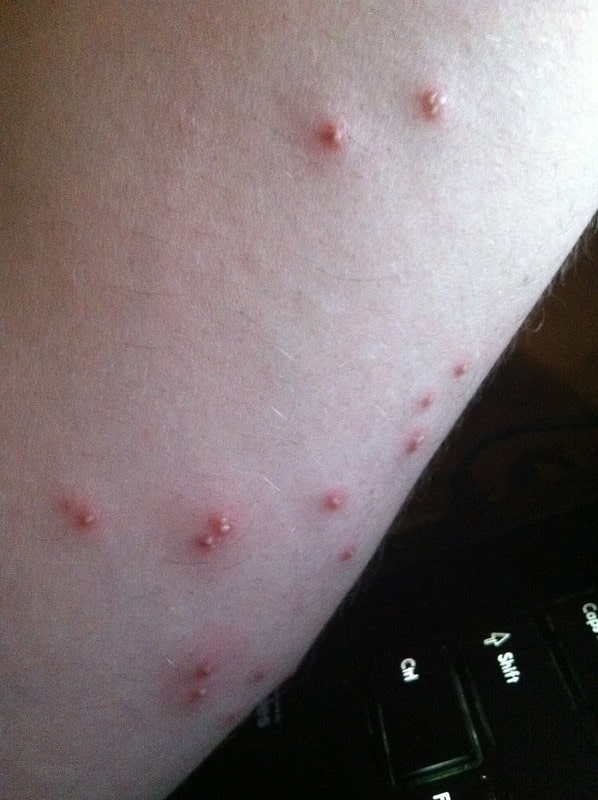
Typically ant bites result in a small, red mark or a raised welt. The bite site may appear swollen, and sometimes a tiny puncture or indentation can be seen in the centre. The affected area may be itchy or mildly painful. The swelling and redness may last for several hours to a day, depending on the individual’s sensitivity.
Ant stings generally produce a red, raised bump or welt at the sting site. In some cases, a small blister may form around the sting. The area may also appear inflamed, and there can be noticeable swelling surrounding the sting. Ant stings cause more intense pain and a burning sensation, often accompanied by increased swelling. The reaction can last from a few hours to a couple of days, depending on the severity and any allergic reactions.
In both cases, the severity of the reaction varies between individuals, with some people experiencing more intense swelling or an allergic reactions to ants bite or sting.
Ant stings and bites symptoms
If you were bitten or stung by an ant you may observe some of the following ant bite symptoms: redness, mild swelling and itching. The bite marks would look much like mosquito bites, with small reddish areas around the bite, that may itch a lot. If it was an ant sting you may feel a burning sensation.
An ant bite or sting commonly causes a local reaction. The symptoms include localised pain, itchiness, redness, swelling, and induration. In most cases, a local reaction lasts less than 24 hours.
Most of the ant bites are harmless and only 0.5 -1% of children develop allergic reactions to ant bites. This percentage is relatively higher in adults – 3%. The allergic reactions of ant bite or sting can lead to nausea, sweating, low blood pressure, headaches, shortness of breath and chest pain.
An ant bite allergy occurs when the immune system reacts abnormally to the proteins or venom in an ant’s bite. Seek emergency medical attention immediately if symptoms of an allergic reaction worsen rapidly or affect breathing.
How to treat ant bites and stings
Wash the ant bite or sting site with soap and warm water to remove any bacteria or venom. If there is significant swelling in the area you should apply a cold compress. Let the area rest in between the cold compresses. Hydrocortisone creams will help with the itching from ant bites. Also, over-the-counter antihistamines can help reduce itching and swelling.
If the sting involves a stinger (common in species like fire ants), remove it as quickly as possible. Use a flat object like a credit card to scrape it off; avoid using tweezers as they can squeeze more venom into the skin. Avoid scratching the bite since can lead to infection and prolonged irritation. If itching is severe, cover the bite with a bandage and check with a doctor.
By following these steps, most ant bites and stings can be treated effectively at home. However, be vigilant for signs of allergic reactions, especially with stings, as they can escalate quickly.
How long do ant bites last?
The duration of an ant bite can vary depending on the individual’s sensitivity and the type of ant involved, but generally:
- Mild reactions to ant bites: If the bite is from a non-venomous ant (such as a garden ant), symptoms like redness, swelling, and mild pain typically last a few hours to a day. The swelling and redness should gradually subside during this time.
- Moderate reactions: In cases where the bite causes more swelling or itching, it may last for 1–2 days, with itching sometimes persisting a bit longer.
- Allergy to ant bites: If there is an allergic reaction, symptoms like swelling and redness may last several days, and medical intervention may be needed. For example, in rare cases of a more intense response, swelling can persist up to a week or longer.
The healing process depends on the severity of the reaction and the individual’s immune response. If symptoms continue beyond a few days or worsen, call you doctor.
Final thoughts
An ant infestation can directly lead to an increased risk of ant bites and stings. Ants will bite to defend their nest or while foraging for food. When an infestation occurs, humans or pets may inadvertently disturb an ant trail or colony, triggering bites.
Infestations involving fire ants or bullet ants can be particularly problematic, as these species can sting multiple times in quick succession, delivering venom that causes pain, swelling, and potential allergic reactions. Treating the infestation can reduce the likelihood of these painful encounters, while individuals should take extra care around known ant activity areas to avoid being bitten or stung by ants.
You should consult a professional ant control expert as soon as possible if you are dealing with an ant infestation in your home.
We only provide valuable information regarding ants bites and the possible health risks they hide. But we, as a commercial service provider, cannot give you medical advice.



